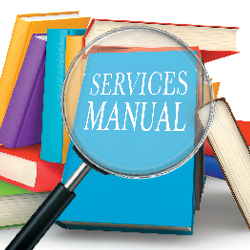Is your exhibit covered under your company's corporate policy, or are you on your own? Here's how to find out before you hit the road for your next show. By Candy Adams

hen we buy insurance, we transfer our risk to someone else in exchange for payment of a premium. Then, if we suffer a loss, insurance puts us back into the financial position we were in prior to that loss. But before we can purchase the correct amount of insurance, we need to determine our risk.
In the case of trade shows, risks include last-minute cancelation of a show, lawsuits (such as personal injuries sustained while in your booth), and damage to or loss of exhibitry. Here are just a few mishaps that I've experienced in my career: prototype demo equipment that was shipped in a wheeled case rolled off the dock, the truck carrying my exhibit was in an accident on the way to the show, a convention center's faulty plumbing sprung a leak and water flooded the booth carpet, and an installation-and-dismantle crew mislabeled a crate containing spare monitors as "empty," and it came back at the end of the show with nothing in it.
All of these fiascos have two things in common: 1) the exhibitor experienced a loss, and 2) finger-pointing ensued that brought up important questions. Who was liable to pay for the loss? Did the loss cover a short-term solution? Did it include lost opportunity costs and/or complete replacement of the damaged property?
If you think the general services contractor or show management will help you out of the aforementioned pickles, think again. Read the fine print in your booth space contract, the rules and regulations, and the back of the drayage form (aka uniform material handling agreement). Show management and the GSC take little to no responsibility for loss, damage, and theft at shows. One GSC's contract states: "If found liable for any loss, GSC's sole and exclusive maximum liability for loss or damage to exhibitor's materials and exhibitor's sole and exclusive remedy is limited to $0.10 (USD) per pound per article with a maximum liability of $50.00 (USD) per item, or $1,000 (USD) per shipment, whichever is less." In the case of one smashed crate full of exhibit properties, this loss would warrant a $50 max payment from the GSC.
Examine your company's insurance coverage for exhibit properties now and not after one of these worst-case scenarios happens to you. Here is how to figure out if you are adequately insured for your next show.
Determine Coverage
Since your exhibit is probably listed on the company's books as a capital asset (assuming its value is more than a certain amount, such as $10,000), it will likely be covered to some extent and pursuant to additional fine-print exclusions on your corporate policy. To find out the extent of coverage, consult your company's risk-management or finance department. If you don't have an in-house risk manager, talk to your company's insurance agent, and ask the following questions.

How much insurance is enough to cover exhibit loss? You will want enough insurance coverage to produce a replacement property or repair after a claim. Tell the risk manager or insurance broker whether the value of your exhibit changes from show to show, and if you have myriad properties for different shows with varying worth.

What's the depreciated versus replacement value of the insured item(s)? Figure out the depreciated value of your exhibit properties compared to what it would cost to replace them in today's dollars. In other words, could you replace them now for what they originally cost to produce? Find out if your coverage is for the replacement cost or the depreciated value of your exhibit.

Is the exhibit property covered under a corporate insurance policy? If your exhibit is indeed included in a corporate property policy, any major losses are likely covered, but you still have to determine who will ante up the deductible amount. If the exhibit isn't covered, you might be able to secure a rider (and an additional premium) to the existing policy. Either way, you will want to know the types of losses that are covered as well as the coverage limits per occurrence. You also need to know the deductible per occurrence so you can decide if you need to buy additional insurance.

When are my exhibit properties covered? If you have corporate property insurance that covers the exhibit while it's in the warehouse, the premium is lower because it's not traveling and there's little risk of anything happening to it. But if you tell the insurance company that the exhibit will go on the road, be handled by common carriers, get set up and torn down, and be loaded back on the truck to storage, the risk goes up, and so does your premium. Some policies dictate coverage up to a set dollar amount all the time, in which case you'd need to pay a higher premium for every piece of inventory you have in a higher risk class. On the other hand, you can give your show schedule to the insurance carrier, and it can determine the amount of time the exhibit will be in storage versus the amount of time it will be on the road and adjust the premium accordingly.

What information do I need to provide if my exhibit property changes? It's possible you'll have to provide documentation outlining any additions to your exhibit property or inventory to continue the coverage. Let's say you're shipping a $10,000 portable exhibit to a show, but shipping that same portable with an added $20,000 video wall to the next. Your carrier would need to know the changes in your inventory to cover it.

Is my exhibit property covered while off company premises? Generally, if you ship direct-to-site, your exhibit will be off company premises for about two weeks – three to five days shipping each way and about five days at the show site. However, advance-warehouse storage is typically free for up to 30 days before a show, and could throw off a "cover it for two weeks every time it goes out" insurance schedule if you use the advance warehouse between shows.

What materials do I need to file a claim? Typically, you will have to report the loss to convention center security officials, file an official police report, take photos of any damage, gather eyewitness statements, etc. Claims usually require information such as the serial numbers on any lost equipment and invoices detailing the cost of exhibit properties. I've seen claims denied due to insufficient documentation to prove the value of losses. Then there are losses caused by uncontrollable factors, such as natural disasters, that are excluded from coverage in most policies. Be cognizant of time frames for filing a claim and subsequent paperwork.
Identify Insurance Variables
Coverage on your exhibit properties can vary depending on the location of your exhibit when the loss occurred. For example, damage or loss can happen when properties are stored in the exhibit house's warehouse, where there is generally no coverage provided by the facility. It can also occur while the property is en route to or from a show, in which case there would be minimal coverage unless additional valuation was placed on the shipment. And if it happens on the show floor, only corporate coverage or door-to-door policies apply.
Some corporate policies automatically cover 10 percent of the firm's physical assets when they are away from the primary corporate offices. Other policies require that any off-premises assets be itemized separately and that the insurance company be informed whenever the properties are on the road to activate the coverage.
Also, most policies have a deductible, and some policies express the deductible as a percentage of the loss, with a minimum and maximum amount. So find out who would pay the deductible if there were a claim. It's not unusual to take out a separate policy to cover the deductible and/or small claims that would increase your company's overall insurance premiums.
Control Damages
In addition to protecting your exhibit assets against potential damage, theft, or loss, having the correct insurance coverage also protects your career. What would happen if misfortune occurred to the exhibit on your watch, and there was no insurance in place to help recoup at least some of the costs? By determining the existing insurance coverage ahead of time, you'll be in a better position to mitigate disaster when it happens.





 hen we buy insurance, we transfer our risk to someone else in exchange for payment of a premium. Then, if we suffer a loss, insurance puts us back into the financial position we were in prior to that loss. But before we can purchase the correct amount of insurance, we need to determine our risk.
hen we buy insurance, we transfer our risk to someone else in exchange for payment of a premium. Then, if we suffer a loss, insurance puts us back into the financial position we were in prior to that loss. But before we can purchase the correct amount of insurance, we need to determine our risk.  How much insurance is enough to cover exhibit loss? You will want enough insurance coverage to produce a replacement property or repair after a claim. Tell the risk manager or insurance broker whether the value of your exhibit changes from show to show, and if you have myriad properties for different shows with varying worth.
How much insurance is enough to cover exhibit loss? You will want enough insurance coverage to produce a replacement property or repair after a claim. Tell the risk manager or insurance broker whether the value of your exhibit changes from show to show, and if you have myriad properties for different shows with varying worth. What's the depreciated versus replacement value of the insured item(s)? Figure out the depreciated value of your exhibit properties compared to what it would cost to replace them in today's dollars. In other words, could you replace them now for what they originally cost to produce? Find out if your coverage is for the replacement cost or the depreciated value of your exhibit.
What's the depreciated versus replacement value of the insured item(s)? Figure out the depreciated value of your exhibit properties compared to what it would cost to replace them in today's dollars. In other words, could you replace them now for what they originally cost to produce? Find out if your coverage is for the replacement cost or the depreciated value of your exhibit.  Is the exhibit property covered under a corporate insurance policy? If your exhibit is indeed included in a corporate property policy, any major losses are likely covered, but you still have to determine who will ante up the deductible amount. If the exhibit isn't covered, you might be able to secure a rider (and an additional premium) to the existing policy. Either way, you will want to know the types of losses that are covered as well as the coverage limits per occurrence. You also need to know the deductible per occurrence so you can decide if you need to buy additional insurance.
Is the exhibit property covered under a corporate insurance policy? If your exhibit is indeed included in a corporate property policy, any major losses are likely covered, but you still have to determine who will ante up the deductible amount. If the exhibit isn't covered, you might be able to secure a rider (and an additional premium) to the existing policy. Either way, you will want to know the types of losses that are covered as well as the coverage limits per occurrence. You also need to know the deductible per occurrence so you can decide if you need to buy additional insurance.  When are my exhibit properties covered? If you have corporate property insurance that covers the exhibit while it's in the warehouse, the premium is lower because it's not traveling and there's little risk of anything happening to it. But if you tell the insurance company that the exhibit will go on the road, be handled by common carriers, get set up and torn down, and be loaded back on the truck to storage, the risk goes up, and so does your premium. Some policies dictate coverage up to a set dollar amount all the time, in which case you'd need to pay a higher premium for every piece of inventory you have in a higher risk class. On the other hand, you can give your show schedule to the insurance carrier, and it can determine the amount of time the exhibit will be in storage versus the amount of time it will be on the road and adjust the premium accordingly.
When are my exhibit properties covered? If you have corporate property insurance that covers the exhibit while it's in the warehouse, the premium is lower because it's not traveling and there's little risk of anything happening to it. But if you tell the insurance company that the exhibit will go on the road, be handled by common carriers, get set up and torn down, and be loaded back on the truck to storage, the risk goes up, and so does your premium. Some policies dictate coverage up to a set dollar amount all the time, in which case you'd need to pay a higher premium for every piece of inventory you have in a higher risk class. On the other hand, you can give your show schedule to the insurance carrier, and it can determine the amount of time the exhibit will be in storage versus the amount of time it will be on the road and adjust the premium accordingly.  What information do I need to provide if my exhibit property changes? It's possible you'll have to provide documentation outlining any additions to your exhibit property or inventory to continue the coverage. Let's say you're shipping a $10,000 portable exhibit to a show, but shipping that same portable with an added $20,000 video wall to the next. Your carrier would need to know the changes in your inventory to cover it.
What information do I need to provide if my exhibit property changes? It's possible you'll have to provide documentation outlining any additions to your exhibit property or inventory to continue the coverage. Let's say you're shipping a $10,000 portable exhibit to a show, but shipping that same portable with an added $20,000 video wall to the next. Your carrier would need to know the changes in your inventory to cover it. Is my exhibit property covered while off company premises? Generally, if you ship direct-to-site, your exhibit will be off company premises for about two weeks – three to five days shipping each way and about five days at the show site. However, advance-warehouse storage is typically free for up to 30 days before a show, and could throw off a "cover it for two weeks every time it goes out" insurance schedule if you use the advance warehouse between shows.
Is my exhibit property covered while off company premises? Generally, if you ship direct-to-site, your exhibit will be off company premises for about two weeks – three to five days shipping each way and about five days at the show site. However, advance-warehouse storage is typically free for up to 30 days before a show, and could throw off a "cover it for two weeks every time it goes out" insurance schedule if you use the advance warehouse between shows.  What materials do I need to file a claim? Typically, you will have to report the loss to convention center security officials, file an official police report, take photos of any damage, gather eyewitness statements, etc. Claims usually require information such as the serial numbers on any lost equipment and invoices detailing the cost of exhibit properties. I've seen claims denied due to insufficient documentation to prove the value of losses. Then there are losses caused by uncontrollable factors, such as natural disasters, that are excluded from coverage in most policies. Be cognizant of time frames for filing a claim and subsequent paperwork.
What materials do I need to file a claim? Typically, you will have to report the loss to convention center security officials, file an official police report, take photos of any damage, gather eyewitness statements, etc. Claims usually require information such as the serial numbers on any lost equipment and invoices detailing the cost of exhibit properties. I've seen claims denied due to insufficient documentation to prove the value of losses. Then there are losses caused by uncontrollable factors, such as natural disasters, that are excluded from coverage in most policies. Be cognizant of time frames for filing a claim and subsequent paperwork. 



